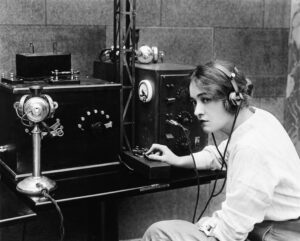
In the final segment of our blog series “The Patents That Made Us,” we will explore the advent of cyber security—the business of keeping our computer systems, networks, programs and data free from digital attacks, unauthorized access, damage, and theft.
When did cyber security become necessary?
To answer that question, we could do a deep dive back to ancient Rome, when security of homes and businesses included keeping a flock of “guard geese” to sound the alarm at intruders. We could also look to ancient Israel, where a mystic Jewish sect protected the Dead Sea Scrolls from Roman invaders by placing the scrolls in jars and hiding them in caves in the Judean wilderness.
Throughout time, people have used all manner of protective measures to defend their businesses and important data, but let us first look at a few highlighted hackers, the ones who give us the reason for our cyber security.
Since the advent of wireless telegraph communication in the late 1800s, our electronic devices have been in danger of foul play. According to our security partner Veridify, the first instance of hacking occurred in 1903, when Guglielmo Marconi, one of the early fathers of telegraphony, sought to demonstrate the effectiveness of his wireless communication device.

Woman sending Morse code using telegraph
Marconi planned to demonstrate how he could send a Morse code message across long distances in front of a live audience at the Royal Institution in London. The message, he claimed, would be impervious to interference. However, Nevil Maskelyne, a music hall magician and competitor of Marconi’s, was skeptical of these claims and wanted to spectacularly prove Marconi wrong. Maskelyne was able to beam powerful wireless pulses into the theatre, interfering with Marconi’s signals and sending a message of his own. Insulting Marconi via several Shakespearean epithets, Maskelyne proved that Marconi’s wireless communication was not as secure as he claimed.
Fast forward to the 1940s and the advent of the first general purpose digital computers. A theorist named John von Neumann, in his paper “Theory of Self Reproducing Automata,” postulated that mechanical organisms could be programmed to reproduce themselves and damage other systems. This was the first manifestation of the concept of the computer virus.
In the following decades, “phone phreaking” took center stage for hackers. Telephone companies used certain tonal frequencies to connect calls long-distance. Hackers calling themselves “phone phreaks” were able to mimic these sounds and score free phone calls. One of the most famous was John Draper, who, in the 1970s, learned that the toy whistle from a cereal box played a tone at exactly 2600 hertz—the same frequency used for AT&T long distance calls, earning him the nickname of Captain Crunch.
In 1982, a fifteen year old high school student named Richard Skrenta developed a boot sector virus that infected Apple II computers. The virus spread through floppy disks and was arguably the first major uncontrolled viral outbreak for personal computers. Similar to the Creeper, Skrenta’s virus left a message for its annoyed victims:
ELK CLONER:
THE PROGRAM WITH A PERSONALITY
IT WILL GET ON ALL YOUR DISKS
IT WILL INFILTRATE YOUR CHIPS
YES, IT’S CLONER!
IT WILL STICK TO YOU LIKE GLUE
IT WILL MODIFY RAM TOO
SEND IN THE CLONER!
Annoying messages notwithstanding, for many, computer hacking has resulted in the loss of passwords, identities, money, data, and safety. We can look at recent major data breaches like those at Yahoo, Capital One, and Equifax to see how devastating and dangerous it can be. Cyber security is an imminent need for digital systems today.
As we continue our series on “The Patents That Made Us,” we will explore the history of computers in America and some of the cybersecurity developments that have risen in response to hackers like Nevil Maskelyne and Richard Skrenta. Join us next week to find out more!
Not all hackers are good natured competitors trying to make a point or students just playing around…today’s hackers want your data for nefarious purposes. For more information on the services that KMC can provide to protect your business, visit KMC Consulting.
References:
https://www.veridify.com/the-hack-of-marconis-1903-wireless-demonstration/
https://www.newscientist.com/article/mg21228440-700-dot-dash-diss-the-gentleman-hackers-1903-lulz/
https://www.coro.net/blog/history-of-cybersecurity-and-cyber-threats
https://cybernews.com/security/brief-history-of-cybersecurity-and-hacking/
https://cyber-security.degree/resources/history-of-cyber-security/
 Cart
Cart